Cliffton is a longtime San Francisco resident and artist, with a warm smile and a knack for storytelling. He’s also a participant at our Rosa Parks Pop-up Pantry, which he walks to with his good friend Sharon. They pick up groceries together, go back to one of their homes, and then plan their meals for the upcoming week (“we’re in the kitchen pretty much all the time,” says Cliffton). Though he’s not an SF native – he moved to California by way of Greenville, Mississippi – Cliffton has lived in the Western Addition since 1981. Needless to say – the neighborhood has changed dramatically.

Through art, youth outreach, and food, Cliffton is determined to continue building community and bringing together Black folks in the Western Addition and the Fillmore who have been displaced and neglected by the city. He’s also passionate about making sure Black youth in the community know the storied history of the Fillmore and Western Addition – “we have a lot of Black history right in front of our face.” Most recently, he worked as a sketch artist for a mural that can be found at the Buchanan Street Mall, and we also learned he will also be working on the city’s Juneteenth celebration. Here’s an excerpt from our conversation, condensed and edited for clarity.
Food Bank: Can you tell us a little more about your advocacy work?
Cliffton: I’m using my art as an activist in my community to help my people. It’s like I’m reconnecting with something. I want to know about the history of the community that I’m in. I want to bring those stories to life. And by me doing art, I can do that. I can bring those stories to light and bringing those stories to light helps a young black man, a young black lady, a young black girl, a young black boy.
FB: Right. You mentioned you work with some organizations like Citizen Film doing youth outreach, and you’re working on another art exhibit that’s going to debut in 2023. Can you tell us a little about that?
Cliffton: So, my art is dealing with trying to help the youth. I want the kids to research the history of the Fillmore during the jazz era, in the ’40s and ’50s. And see, by them researching their own history, they’re educating themselves about their people. It’s educational for the kids that’s doing the research, it’s educational for the community to know about the past, and it’s also educational for the passerby to see that history. We have a rich history.
FB: That sounds like it’s going to be not only an informative exhibit, but it’s really going to bring to life the history of the Fillmore.
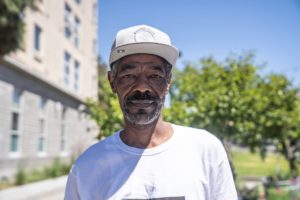 Cliffton: My biggest thing is for my people to get educated. What you know, they can’t take that away from you. If you want to stay in your community, you’ve got to find a way. Educate yourself on what City Hall is doing for your community, what you can do for your community. I’m helping set up the Juneteenth celebration [for the city]. I have a booth at the Juneteenth celebration, and I’ll be selling my t-shirts and stuff, and I will also bring a good portion of my artwork up there to display.
Cliffton: My biggest thing is for my people to get educated. What you know, they can’t take that away from you. If you want to stay in your community, you’ve got to find a way. Educate yourself on what City Hall is doing for your community, what you can do for your community. I’m helping set up the Juneteenth celebration [for the city]. I have a booth at the Juneteenth celebration, and I’ll be selling my t-shirts and stuff, and I will also bring a good portion of my artwork up there to display.
FB: That’s awesome, I’m really looking forward to it. What does Juneteenth mean to you?
Cliffton: Juneteenth means to me, freedom, life, happiness, and loving one another. I really can’t express what the heart feels…. freedom, freedom, freedom, that’s what the heart pumps.
FB: That’s beautiful. Thank you for sharing that. Now, just to bring it back to food, what are some of your memories associated with food?
Cliffton: Cooking brings back memories of my mother when I was young, in the kitchen with her and my sisters and brothers and sitting around preparing food. We’re in conversation, communicating, laughing, joking with each other and having fun, learning how to cook, you know? So, when I’m cooking now, that’s what it brings back. When we’re cooking and the kids are all in there, and we’re sitting around, preparing the meal and cooking, everybody got that conversation going, everybody got a memory going. They remember this, they remember that and we’re all laughing.
FB: Love that. Thank you for painting that picture. My final question – what does food mean to you?
Cliffton: Food brings you together, you know? And especially when you’re a good-hearted person and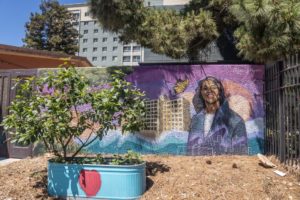 you’ve got good people around you, when you’re cooking, and you got people over and everything… take the food away, you got chaos. If you got a group of people together, bring the food. Ain’t nobody fussing. You can’t fuss because you’re eating. It’s something nourishing for the body, and the body won’t allow you to be negative at that moment because it’s food. A good hefty stomach makes you want to kick back, relax, take your shoes off and just be Black.
you’ve got good people around you, when you’re cooking, and you got people over and everything… take the food away, you got chaos. If you got a group of people together, bring the food. Ain’t nobody fussing. You can’t fuss because you’re eating. It’s something nourishing for the body, and the body won’t allow you to be negative at that moment because it’s food. A good hefty stomach makes you want to kick back, relax, take your shoes off and just be Black.
Nourish the Neighborhood
With groceries taken care of, Cliffton invests energy into his community – “we have other important things to put our finances toward, you know?” It’s an important reminder that food is the basis for so much more. Healthy groceries fuel the artists, activists, community organizers, mentors, and others who shape our neighborhoods into the vibrant, dynamic spaces that we know and love.


 the past 40 years, and understandably, she’s seen the city change a lot in her time here. “When I came here [in the 80s], you could buy a thousand wonders for $50. You could fill the refrigerator for at least a month [for $50]. Now, everything is so expensive. There are times when there’s not enough to buy food. It’s terrible.”
the past 40 years, and understandably, she’s seen the city change a lot in her time here. “When I came here [in the 80s], you could buy a thousand wonders for $50. You could fill the refrigerator for at least a month [for $50]. Now, everything is so expensive. There are times when there’s not enough to buy food. It’s terrible.” 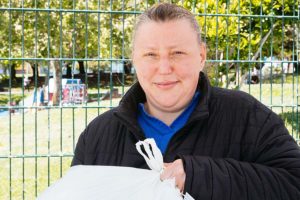 now, Anna is working anywhere from six to seven days a week as a nurse at Highland Hospital, and teaching UCSF nursing students as well. She stops by Cesar Chavez Pop-up Pantry to pick up food for her parents on her one day off.
now, Anna is working anywhere from six to seven days a week as a nurse at Highland Hospital, and teaching UCSF nursing students as well. She stops by Cesar Chavez Pop-up Pantry to pick up food for her parents on her one day off. 

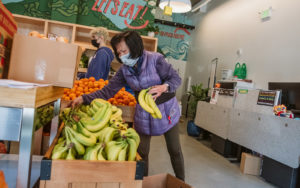
 L
L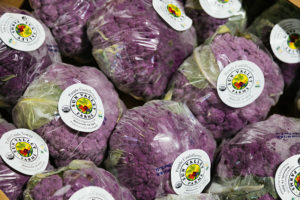 delivering more than nutrition to their parish. SFAAFBC’s holistic approach allows them to target the root causes of food insecurity by caring for the whole person.
delivering more than nutrition to their parish. SFAAFBC’s holistic approach allows them to target the root causes of food insecurity by caring for the whole person. Other parents are more hesitant to let go of remote or homeschooling. Farzad is the single dad of 3-year-old Mehdi, as well as a musician, small business-owner, and participant at Cesar Chavez Pop-up Pantry. Farzad watches his son drive a toy car around the playground and sighs, shaking his head when asked about in-person preschool. He doesn’t “want Mehdi to go until COVID is over,” citing health concerns like maskless and unvaccinated children.
Other parents are more hesitant to let go of remote or homeschooling. Farzad is the single dad of 3-year-old Mehdi, as well as a musician, small business-owner, and participant at Cesar Chavez Pop-up Pantry. Farzad watches his son drive a toy car around the playground and sighs, shaking his head when asked about in-person preschool. He doesn’t “want Mehdi to go until COVID is over,” citing health concerns like maskless and unvaccinated children. 
 Partners like Meals on Wheels, as well as our own
Partners like Meals on Wheels, as well as our own 
Share